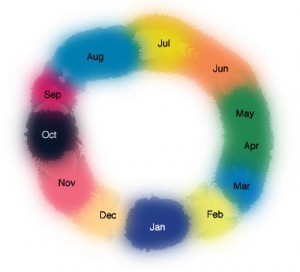 Irregular sensory experiences
Irregular sensory experiences - a child experiencing synaesthesia will not recogise the condition, but those around him will be ale to suspect it if general expressions imply out of the ordinary sensory experiences
- an adult will be able to identitfy if they have synaesthesia because they will have the knowledge that 'eyes cannot taste' 'ears cannot see' etc.
Consistent reactionary triggers
- the same trigger will always cause the same senses to intertwine
- test-retest is often used to test for synaesthesia because the same charactyeristics would be idenitfied twice and the results would be the same
Involuntary and automatic perception
- an obvious symptom of synaesthesia is the involuntary, automatic nature of the perceptions
- psychologists make use of tests that measure reaction timein order to determine is a person is a synesthete
- if it takes time to assign a colour to a letter for example, then this means a person is not a synesthete because this should happen automatically
Simple and objective sensations
- perceptions are 'durable and generic, never pictorial or elaborated'
- visual synesthetic sensations will consist of a geometric pattern or acolour, rather than a complex visualisation
No comments:
Post a Comment